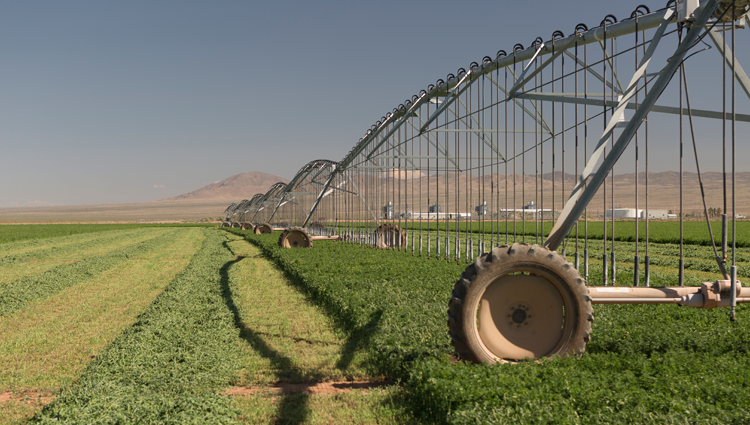Our first stop in the journey of milk from the farm to the table is the production of feed for dairy cows.
Ingredients in cow feed vary by season and geography, but it’s typically a mix of alfalfa hay, soybeans, corn, canola, cottonseed, protein, vitamins and minerals. Dairy farmers work with professional cow nutritionists to develop balanced and nutritious diets for their herd. A cow’s diet (also known as a ration) will vary based on the cow’s life stage and needs.
Perhaps what’s most surprising is that approximately eighty percent of a cow’s diet is not consumable by humans and would otherwise end up in a landfill. Why is this a big deal? According to the Environmental Protection Agency (EPA) “In 2014 alone, more than 38 million tons of food waste was generated, with only 5.1 percent diverted from landfills and incinerators for composting.”
When food is thrown away, we are throwing away much more than food – wasted food not only wastes water and labor, but also land and other natural resources.
The EPA’s Food Recovery Hierarchy offers a better understanding of the enormous impact that reducing or recovering food waste can have on the sustainability and security of our food system and our environment. The top two tiers of the Hierarchy, Source Reduction and Feed Hungry People, provide the biggest benefit to the environment, the economy and society. The third tier, Feed Animals, emphasizes diverting food scraps to animal feed.
And while not all food scraps are consumable by or beneficial for animals, there is much that our dairy farm families are doing daily to play their part in a sustainable food system and a healthy environment for future generations. Many dairy farmers utilize the by-products of the food and beverage processing industries to meet many of their herd’s nutritional needs, all the while diverting waste. For instance, many dairy farmers utilize the unused citrus pulp from orange juice companies as a nutritious ingredient in a dairy cow’s diet. Here in Colorado, dairy farms receive brewers grain and cottonseed – both by-products from local industries in the state – and both nutritious additions to cow rations.
Dairy farmers are working together to “honor the harvest” as they move nutrients through the food system – from people, to animals and back to the land to grow more food – instead of going to waste in a landfill.
Check out the full series:
- The Art and Science of Dairy from Farm to Table: An Intro
- The Art and Science of Dairy from Farm to Table: Production of Feed and Reducing Waste
- The Art and Science of Dairy from Farm to Table: Milk Production
- The Art and Science of Dairy from Farm to Table: Raw Milk Transport
- The Art and Science of Dairy from Farm to Table: Processing and Packaging
- The Art and Science of Dairy from Farm to Table: Retail and Distribution




